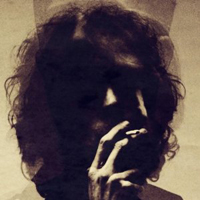Scott Morrow is ALARM’s music editor. Patrick Hajduch is a very important lawyer. Each week they debate the merits of a different album.
 The Psychic Paramount: II (No Quarter, 2/22/11)
The Psychic Paramount: II (No Quarter, 2/22/11)
The Psychic Paramount: “RW”
[audio:https://alarm-magazine.com/wp-content/uploads/2011/04/The_Psychic_Paramount_RW.mp3|titles=The Psychic Paramount: “RW”]Morrow: Though relatively silent for the past six years, New York noise-rock trio The Psychic Paramount recently released a new full-length album, its first since Gamelan Into the Mink Supernatural in 2005. The wait was well worth it.
Effected guitar loops, devastating low-end grooves, and bashing rhythms again form the core of the band’s sound, but II is more compact than its predecessor. Both pack a mighty wallop, but Gamelan…, which was based on live jamming, was more sprawling and improvised. This one is a direct but dynamic rock explosion.
Hajduch: If you like tremolo picking, but don’t want to listen to black metal or Godspeed You! Black Emperor, then this may be the album for you. The guitar is a constant, blurry howl. Between the guitar, the cymbals, and the effects, the mid-range gets a constant workout. You don’t even notice how ferocious the drums are until the guitar drops out. But the drums are pretty ferocious!
Morrow: Yes, absolutely, but there’s also plenty of backbone behind all of the crashing and clanging; it’s not a whirlwind of fills.
The best moments, I think, are the semi-abrupt changes. For example, a few minutes into “DDB,” the music transforms into a dark, forceful fit, with a 3/4 bass repetition, clattering snare hits, and over-driven guitar noise. But the intensity doesn’t overstay its welcome, and soon it’s back to psychedelic reverb, interstellar effects, and head-nodding rhythms before mutating once again.
Hajduch: I don’t share your love for semi-abrupt changes, but the album is much more dynamic than just a steady roar. “Isolated” begins at maximum volume and peels back the layers one by one to leave a skeletal, galloping riff. And album closer “N5 Coda” is pinned to a two-note hum of feedback, with the other instruments noodling in back for the most part — until the drums clamp down and the bass takes the focus.
The track vacillates between these two modes, playing the negative space against the otherwise-constant cymbal clatter. Which reminds me: the star of this album is the squashed-down drums. The way that they sound overwhelming yet blown out really adds a lot to how II sounds.
Morrow: It must have been a real skill to mix this just right. The layering is crucial, as evidenced on “N6,” where the band rides a two-note bass riff and noisy one-chord guitar strum before layering on secondary chords and distortions to build a denser wall of sound.
Those who are turned off by this kind of music may find it to be an exercise in patience, but the lengthier durations are a testament to the trio’s skills at climax and denouement. If the band’s long layoff prevented you from getting acquainted, let II be your primer.

